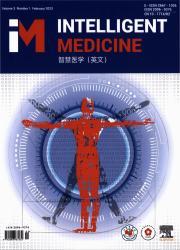Nationwide survey of the status of artificial intelligence-based intracranial aneurysm detection systems
IF 6.9
Q1 COMPUTER SCIENCE, INTERDISCIPLINARY APPLICATIONS
引用次数: 0
Abstract
Objective
Intracranial aneurysm imaging artificial intelligence (AI) products have entered the clinical implementation phase, but the application status of them in Chinese hospitals remains unclear. A nationwide survey was conducted to explore the current status of intracranial aneurysm imaging AI products in hospitals across China.
Methods
Delphi method was used to develop a questionnaire, which was then distributed to the radiologists across China between September 3rd and 10th, 2023. Independent predictors of the adoption of these AI products, radiologists' attitudes, concerns and knowledge about these AI products were evaluated using logistic regression. Participants were categorized into seven groups based on Chinese geographical regions to compare the performance of these AI products in different geographical regions.
Results
After 3 rounds of Delphi discussion by 29 radiologists, the questionnaire was derived. A total of 961 radiologists from 777 different hospitals in 31 provinces across China completed the questionnaire. Among these hospitals, 45.4% (353/777) had introduced intracranial aneurysm imaging AI products. The most commonly reported concern with these AI products was poor specificity (265/446, 59.4%). The majority of respondents had basic (310/961, 42.0%) or intermediate (331/961, 44.9%) knowledge of AI products and they held positive attitudes (913/961, 95.0%) towards using them. Those who had received AI training were more likely to possess a higher level of knowledge about AI (odds ratio (OR) = 1.80, P = 0.04). For regional comparison, respondents in Central China and East China gave the highest ratings to the accuracy (OR = 2.41, P = 0.048 vs. OR=2.36, P = 0.02) and specificity (OR = 2.34, P = 0.046 vs. OR = 2.37, P = 0.02) of these AI products.
Conclusion
The intracranial aneurysm imaging AI products may be widely used in Chinese hospitals but vary by clinical scenarios and geographic position.
全国基于人工智能的颅内动脉瘤检测系统现状调查
目的颅内动脉瘤成像人工智能(AI)产品已进入临床实施阶段,但在我国医院的应用状况尚不明朗。在全国范围内进行了一项调查,以了解中国各地医院颅内动脉瘤成像人工智能产品的现状。方法采用德尔菲法编制问卷,于2023年9月3日至10日向全国放射科医师发放。采用这些人工智能产品的独立预测因素,放射科医生对这些人工智能产品的态度、关注和知识,使用逻辑回归进行评估。参与者根据中国的地理区域分为七组,以比较这些人工智能产品在不同地理区域的性能。结果29名放射科医师经过3轮德尔菲讨论,得出问卷。来自中国31个省份777家不同医院的961名放射科医生完成了调查问卷。45.4%(353/777)的医院引进了颅内动脉瘤成像人工智能产品。这些人工智能产品最常见的问题是特异性差(265/446,59.4%)。大多数受访者对人工智能产品有基本(310/961,42.0%)或中级(331/961,44.9%)的知识,对使用人工智能产品持积极态度(913/961,95.0%)。接受过人工智能训练的人更有可能拥有更高水平的人工智能知识(比值比(OR) = 1.80, P = 0.04)。在区域比较中,华中和华东地区的受访者对这些人工智能产品的准确性(OR = 2.41, P = 0.048 vs. OR=2.36, P = 0.02)和特异性(OR = 2.34, P = 0.046 vs. OR= 2.37, P = 0.02)给出了最高的评分。结论颅内动脉瘤成像人工智能产品在我国医院可广泛应用,但因临床情况和地理位置而异。
本文章由计算机程序翻译,如有差异,请以英文原文为准。
求助全文
约1分钟内获得全文
求助全文
来源期刊

Intelligent medicine
Surgery, Radiology and Imaging, Artificial Intelligence, Biomedical Engineering
CiteScore
5.20
自引率
0.00%
发文量
19
 求助内容:
求助内容: 应助结果提醒方式:
应助结果提醒方式:


